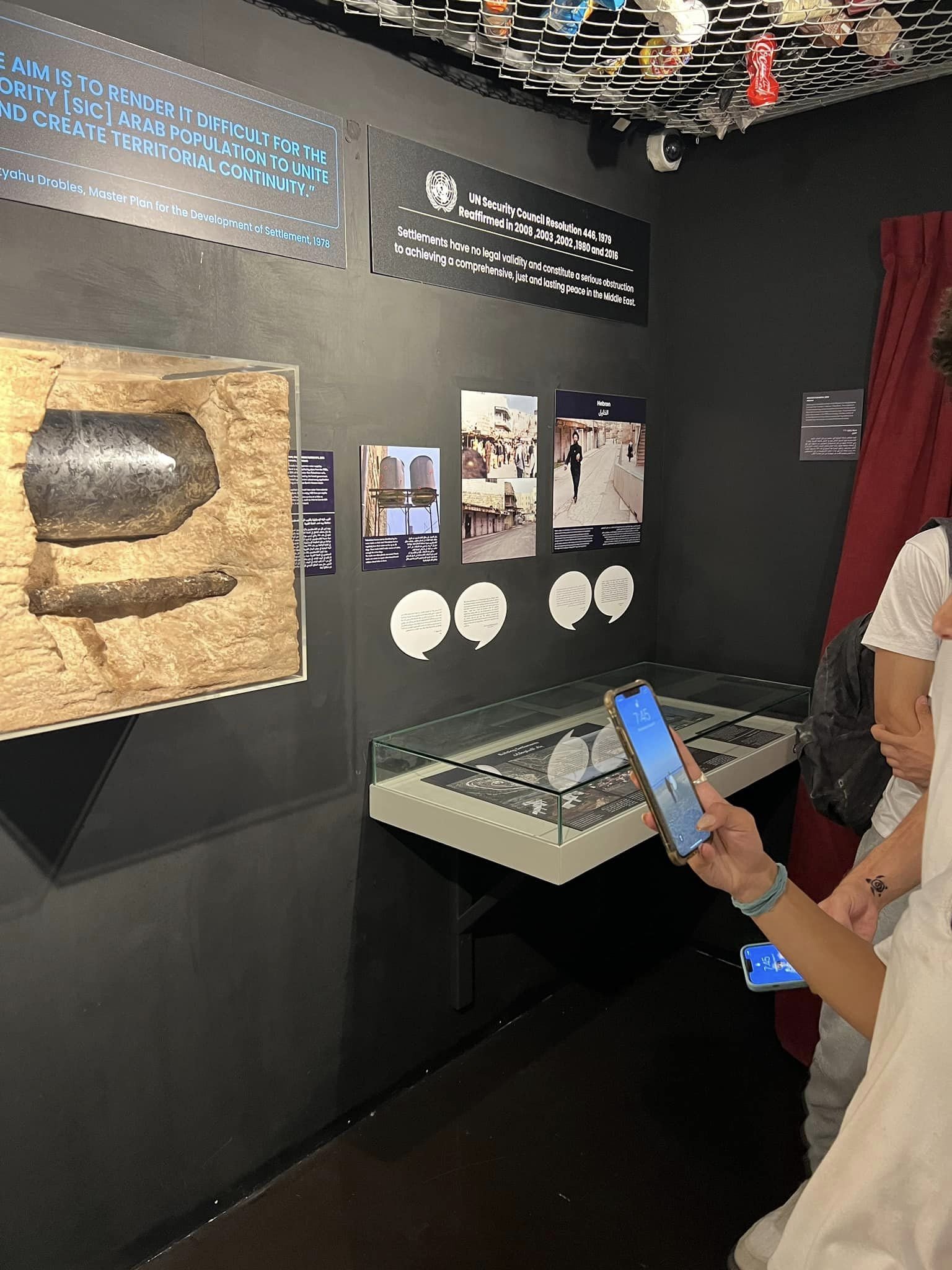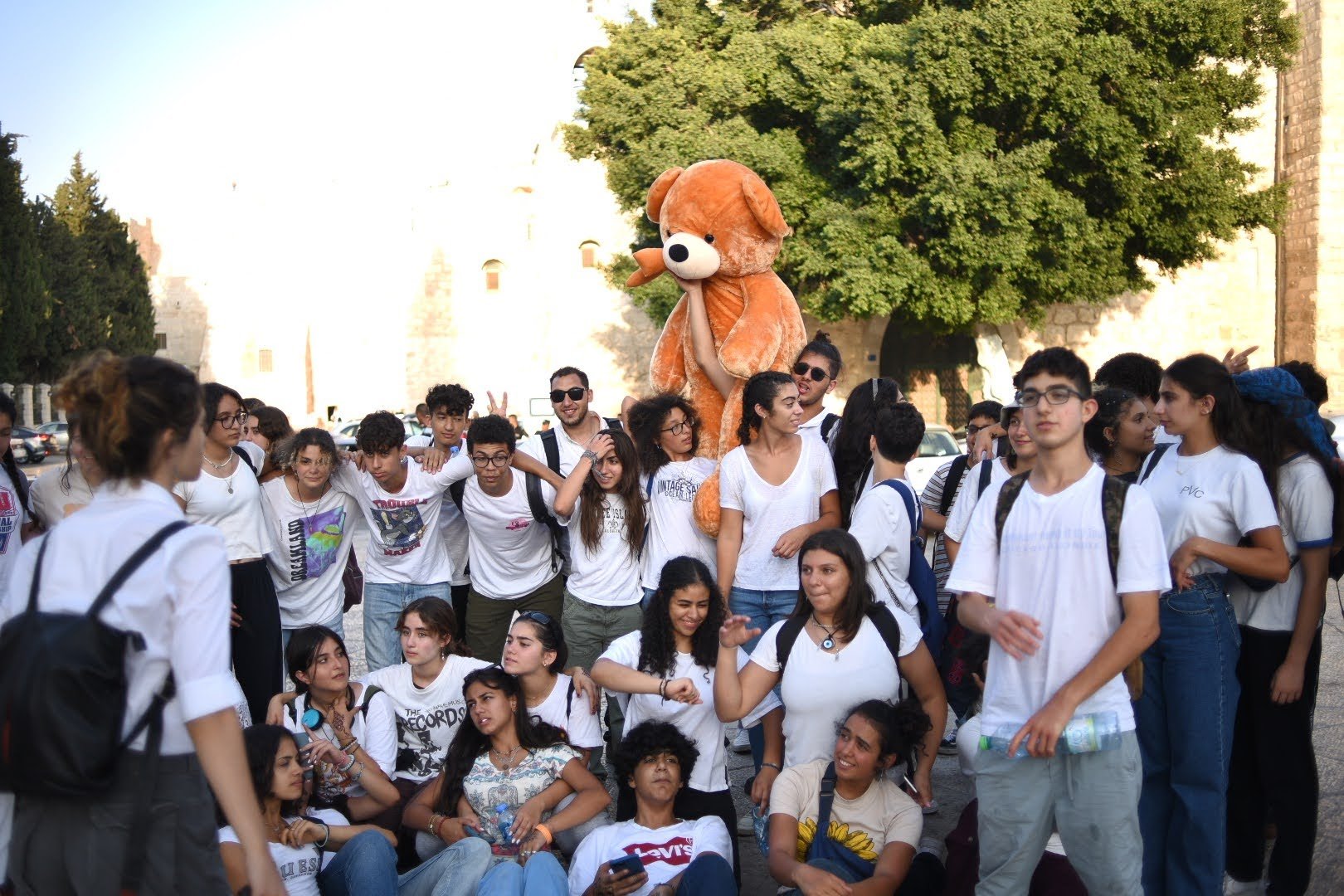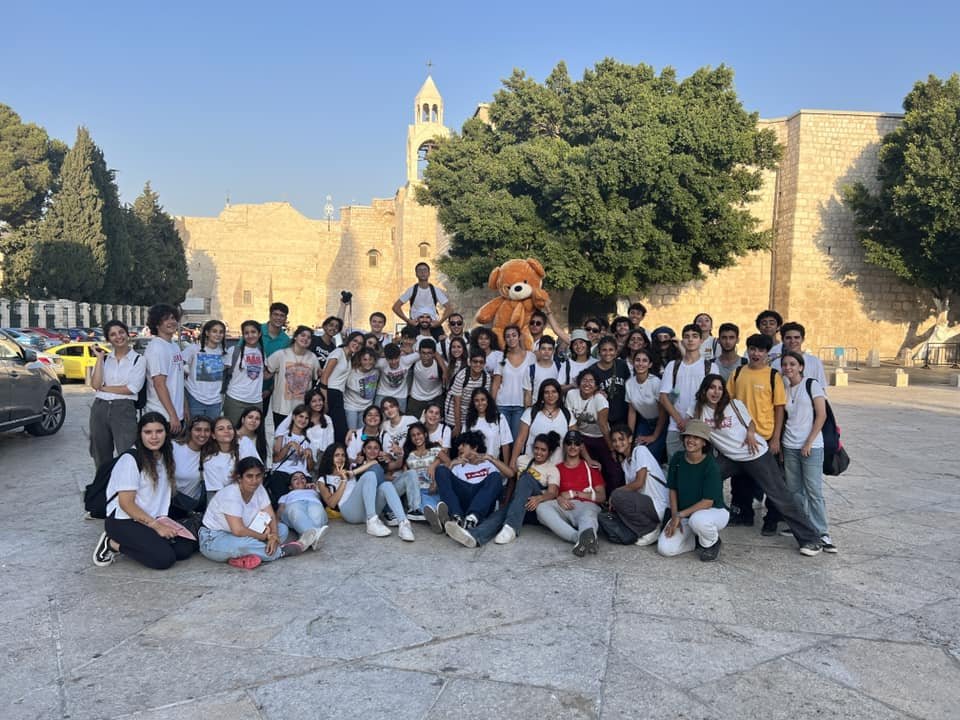☀️ Day 1️⃣5️⃣: Hebron + Bethlehem
On this day we trekked to the southern West Bank where campers got to experience Hebron and Bethlehem 🇵🇸. We first arrived in Hebron 🏙️ and met with our guide at a parking lot in the modern part of the city and walked towards the ancient city of Hebron. We explained to the campers that unlike the rest of the West Bank which is divided into Areas A, B, and C Hebron is divided into areas H1 and H2 under the Oslo Agreement 📜. The old city of Hebron was once the commercial hub of the southern West Bank, however, today Hebron’s city center became the site of several settlements in the midst of the local Palestinian population. Area H1 of Hebron essentially functions as Area A, in that security and administrative matters are handled by the Palestinian Authority. However, in H2, which includes the city center and old city, Israel retained responsibility for security matters, while the PA received authority only for civilian matters relating to local Palestinian residents. About 34,000 Palestinians and 700 settlers now live in H2. We began walking through the H2 and campers quickly began to notice the shift in activity and livelihood of the area. Less and less shops were open and then we began seeing road blocks and Israeli soldiers and military watch towers peaking through the canopy of ancient homes and shops of the cities 🚧. We stopped by the gate that now seals of what used to be the central taxi/bus station that used to take people from Hebron to both Jerusalem and Gaza. An adjacent shop owner explained how close Hebron was to Gaza and how important the now closed station was to transportation for people between the nearby cities- now completely sealed off from each other. We continued walking through the old city and the guide pointed out the important work of the Hebron Rehabilitation Committee, an organization that is working towards strengthening the sumood of the people of the old city through upgrading the infrastructure, renovating homes, and revitalizing the shopping areas through direct aid 🏠. Along the way, campers got to stop at many of the souvenir shops, supermarkets, and falafel shops to support the local economy. The guide pointed out how the streets are covered by nets to protect the walkers and shops from trash and debris that are thrown at the locals from settlers who have taken over the top part of the buildings. We arrived at the first checkpoint to the Ibrahimi mosque just before noon prayers. Campers went through the first round of turnstiles that led us to the mosque’s compound as well as to the Shuhada Street (aka Apartheid Road). This part of Hebron has some of the most visible signs of apartheid in Palestine 🚫. We went through a second checkpoint to enter the mosque. The guide explained that these “security” measures were installed following the 1994 massacre by Baruch Goldstein, a settler from New York, who entered the mosque during prayers during the holy month of Ramadan and shot and killed 29 men prostrating during






















